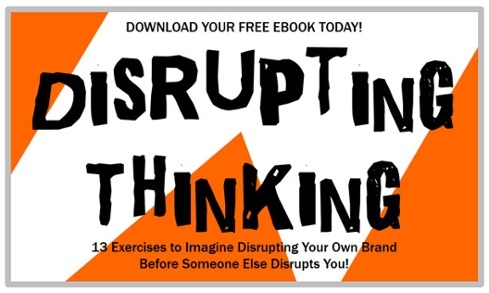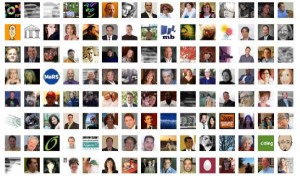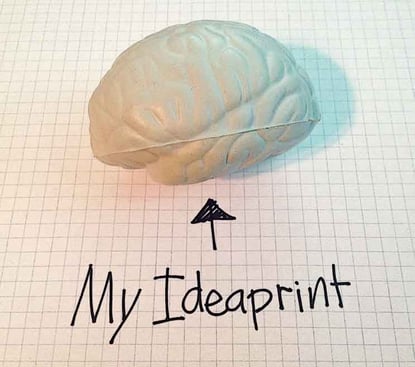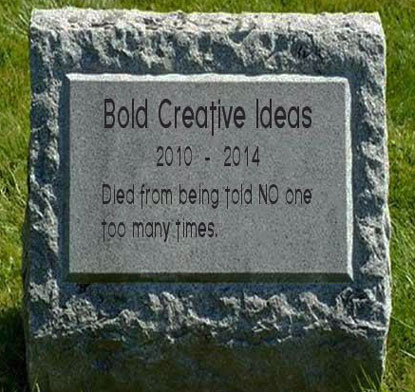I had the wonderful opportunity at the 2013 Marketing World (sponsored by Frost and Sullivan) to spend time talking with Pam Didner, Global Integrated Marketing Strategist at Intel Corporation. I'd met Pam previously, but the Marketing World setting provided time to learn more about her work, interests, and blog. Pam's "Savory Bites" blog focuses on a variety of business and personal topics relevant for Brainzooming blog readers. And as of 2014, Pam is set to publish a new book, "Global Content Marketing: How to Create Great Content, Reach More Customers, and Build a Worldwide Marketing Strategy that Works" for McGraw-Hill.
(Affiliate Link)
To introduce you to Pam Didner, Savory Bites, and her strategic perspective, she agreed to let us share a recent post on making idea sourcing innovative ideas sustainable for the long-term through a sound process. While crowdsourcing ideas to shape a business sounds attractive, Pam's post sheds light on how two organizations have not only kept cultivating innovative ideas but have also done something about them for more than five years:
Innovative Ideas - 4 Keys to Sustainable Idea Sourcing by Pam Didner
 When I think of sustainable idea sourcing for innovative ideas, two prominent examples come to my mind: Dell’s Idea Storm and Starbuck’s My Starbucks Idea. Both used SalesForce.com’s Idea platform. Dell launched IdeaStorm in February 2007, while MyStarbucks Idea was launched in March, 2008. Both celebrated their 5th anniversary milestones, which is quite amazing.
When I think of sustainable idea sourcing for innovative ideas, two prominent examples come to my mind: Dell’s Idea Storm and Starbuck’s My Starbucks Idea. Both used SalesForce.com’s Idea platform. Dell launched IdeaStorm in February 2007, while MyStarbucks Idea was launched in March, 2008. Both celebrated their 5th anniversary milestones, which is quite amazing.
Behind the Idea Sourcing Numbers
It’s interesting to compare the results of a technology company and a restaurant company:
| Ideas submitted | Ideas implemented | % of implementation | |
| Dell | 19,102 | 537+ | 2.8% |
| Starbucks | 150,000 | 277 | 0.18% |
- Most of the innovative ideas contributed to Dell are more technical in nature. Product design teams evaluate these ideas and make changes to their products. They may need to source new vendors or retool their manufacturing processes. Dell’s business model focuses on selling directly on-line and relies on its channel and retailer partners to sell off-line. Dell itself is not directly responsible for storefront experiences or engagement.
- Ideas to Starbucks are more consumer-oriented in nature. In addition to their core products, customers can provide feedback on store design, store experience, food, payment and anything related to stores, on-line, advertising etc. Therefore, substantially more ideas are submitted by Starbucks customers. Implementing a simple idea such as “Splash Sticks” requires the design of the stick (something that has not existed before), raw material selection, vendor selection, distribution to thousand of stores worldwide, barista training, as well as details of the display and placement. The considerations and complexities of scaling to stores worldwide may be one of the reasons that Starbucks has implemented fewer innovative ideas.
The Process Behind Sustainable Idea Sourcing
Once you set up a community or a website to solicit customer feedback, you need a back-end process to ensure the ideas are evaluated and the innovative ideas are implemented.
1. Classify ideas
Although it’s easy to build categories on your website, it’s important to think through how you’d like to categorize your customers’ ideas. Should you categorize by your products, organization structure, topics, etc.? The way you categorize will determine the subsequent steps for reviewing and implementing. To make it easier to engage with internal stakeholders from different organizations, it may make sense to classify your ideas by products and organization structures.
Key consideration: How do you make it easy for a customer to classify his ideas and also easy for internal stakeholders to sort through the ideas for further follow-up?
2. Review and prioritize ideas
This needs to be a frequent, regularly scheduled process, especially if the volume of submissions is high. A team from multiple organizations needs to be formed and a workflow process needs to be established for the initial screening, parsing and prioritization based on categories. No organization has unlimited budget and resources. To select the right innovative ideas to implement, a second or third round of review and prioritization may be necessary. Depending on the scope of the ideas, upper management may need to approve them. It’s highly recommended to have senior managers involved in the selection of ideas in the 2nd or 3rd round of reviews. Management cares about the bottom-line. Quantify how the idea will impact revenue, cost or customer experience and satisfaction. Identify key success metrics.
Key consideration: Resource properly from internal organizations to review, screen and prioritize ideas. Establish an automatic workflow process to make it easy for internal partners to review and prioritize ideas. It’s a plus to get senior managers involved.
3. Implement innovative ideas
Some ideas may be low-hanging fruit, but they still require time and resources to implement. It’s important to take care of two things before implementation: budget and resource. Clearly identify who should take ownership for implementation and how much it will cost to do it. Sometimes, it makes sense to incorporate implementation of these ideas into the existing product launch or revision processes. Setting up regular review meetings to track progress is essential.
Key consideration: Settle budget and resources first. Identify clear project owners and allocate the right budget to support implementation.
4. Report the results
A process to track and report on the success or failure of idea implementation is essential. Starbucks is able to create a 5-year celebration infographic, due to its discipline in tracking idea implementations. Track actual results against the key success metrics you designed in step 2.
Key consideration: Have a process for tracking the results and share the results with the community and customers.
Innovative Ideas to Sustainable Implementation
It takes time, process, budget, and people to implement ideas from your customers. Once an idea is piloted successfully, it also takes time and effort to “scale” to different stores, different manufacturing facilities, or different countries. Customers should not see the effort behind the scenes, but they should know you’re listening to them and working on ideas and issues they care about. - Pam Didner




